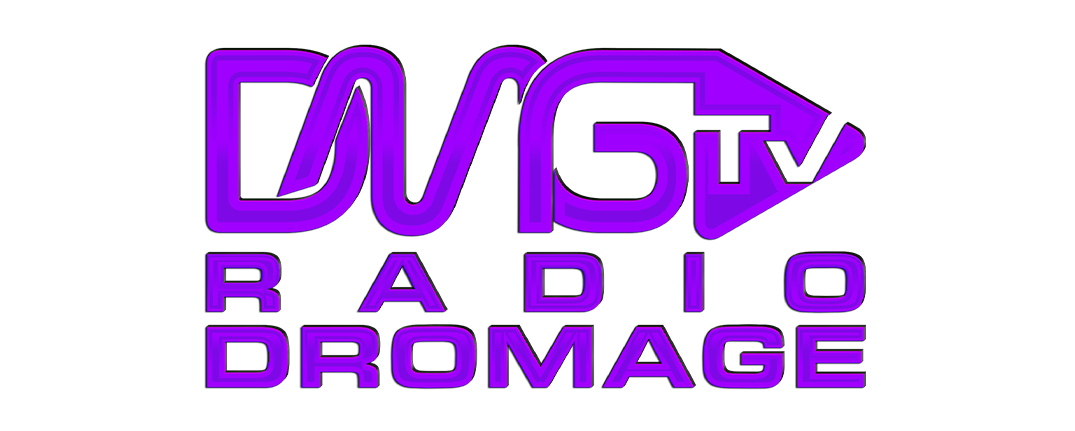Listeners:
Top listeners:
-
 play_arrow
play_arrow
RADIO DROMAGE
 Bloc Party - Helicopter
Nothing much really
Lucy Harty
Bloc Party - Helicopter
Nothing much really
Lucy Harty
 Chase Rice - Ready Set Roll
Are we on air???
Roy Yellow
Chase Rice - Ready Set Roll
Are we on air???
Roy Yellow
 Annoying Orange - Party Rock
You know I come to party hard!!
Annoying Orange - Party Rock
You know I come to party hard!!
Electricity and internet outages disrupt daily life in Haiti’s northern region

PORT-DE-PAIX—In recent weeks, under the weight of instability and gang-led insecurity, residents in Haiti’s Greater North have been grappling with worsening disruptions in communication services. The lack of reliable electricity and internet access has compounded daily challenges. Customers of the two largest telecom service providers, Natcom and Digicel, have reported persistent connectivity issues and outages, further complicating their lives amidst an already difficult situation.
In addition to inconsistent phone and internet services, a chronic lack of electricity intensifies difficulties for people trying to stay connected. Many residents, like Merline Francois of Port-de-Paix— the capital city of the Northwest Department, must rely on costly private energy sources to charge their devices.
“I have to pay private operators 400 gourdes or about US$3 daily just to charge my phone or other devices because I have not seen electricity in the city for years,” said François, 43, a vendor of food products.
Similarly to François, many must buy power from small shops to charge their devices, including tablets, laptops and cellphones, which their children need for school.
The Northwest endures a relentless blackout as the local branch of the public company Electricité d’Haïti—also known as the EDH office—becomes nonoperational. A critical power plant has been inactive for over two years. The situation is not different in other departments in the northern region, leaving residents exposed to excessive charges from private energy entities. Those who can afford it install their own electricity system, mainly fueled by solar panels.
However, for Machly Edouard, director of EDH, contrary to popular belief, connectivity issues are not directly related to the instability of the electricity supply.
“The problem of connectivity is often misunderstood,” Edouard told The Haitian Times. “Although electricity is a major issue in the country with EDH not being able to meet the increasing energy demand, telecommunications companies have developed their own energy infrastructure to ensure continuity of their services.”
He said more than energy independence is needed to solve all the problems. Companies also face logistical challenges related to the maintenance and expansion of their networks. The lack of investment in updated infrastructure, difficulties in supplying equipment, and growing insecurity affect their ability to maintain and improve communication services.
Struggling with connectivity exacerbated disruptions in daily life and business
Inadequacies in electricity infrastructure and service affect not only individual consumers and businesses but also negatively impact service providers, who must invest more in developing infrastructure.
The region’s electricity system is either unreliable or non-existent. Therefore, telecom companies must fuel their networks independently, which is also inconvenient and inconsistent.
Both Natcom and Digicel struggle to meet demand. Subscribers report difficulty contacting company representatives for solutions, noting that management has yet to take meaningful action.
In some cases, customers angrily redacted to losing access when Digicel removed key antennas from their areas.
“Digicel removed the equipment that used to make the internet work in my area,” said Wilson Michel from Guinaudée, a locality in the Jean-Rabel commune—about 20 miles from Port-de-Paix.
In most areas, residents are even forced to leave their homes in search of a signal to make phone calls. Subscribers regularly express frustration with the high cost of internet plans that remain unusable due to poor connectivity.
Customers experience what many feel like a scheduled shutdown. Service is typically available only for limited parts of the day.
“Every evening around 9 p.m., the signal disappears, and it doesn’t return until 7 a.m. or 8 a.m.,” said Faïdine Antoine. “Sometimes, I go days without service despite paying expensively for it.”
In addition to a $150 installation fee, a Natcom or Digicel customer can pay between $50 and $400 monthly for internet service in Haiti.
This inconsistent connectivity has far-reaching consequences, affecting public institutions and businesses alike. Customers wait hours in line at banks and cannot access services until the signal is restored. They often describe the situation as “absurd,” with access so limited that it hampers essential daily activities.
People in the border areas who can meet some specific requirements subscribe to services from companies in the neighboring Dominican Republic for better quality and consistency. Some even buy internet services in the DR and resell them to Natcom and Digicel users.
Internet service providers in the Dominican Republic charge a $150 installation fee and a $30 minimum per month for higher speed and better connectivity.
Others who can afford it prefer the satellite service provided by Starlink, the U.S.-based company run by tech mogul Elon Musk.
Startlink has a $450-$600 kit and installation fee, depending on the area. Then, the consumer will pay between $50 and $360 monthly based on the level of service purchased.
Responses from telecom providers to service concerns
While the outages and poor service continue, Natcom representatives acknowledge the exacerbated situation, attributing network challenges in part to recent attacks by armed gangs.
“Our largest optical fiber line was damaged by the Kokorat Sans Ras gang operating in Tibwadòm [an area between Artibonite and Northwest departments], which has disrupted service,” said Rosny Frédéric, chief engineer of Natcom in the northern region.
“Our technicians are working on building 12 new towers that should be operational in the next 30 to 60 days. However, we cannot negotiate with the gangs to access the area for repairs.”
Frédéric also noted that increased demand and energy limitations contribute to intermittent connectivity, particularly in areas relying on solar power.
“When it rains or at night, the lack of sunlight affects service, but we are working to bring in more generators and solar panels to address this.”
No major updates to the infrastructure have been made since mobile companies first arrived in Haiti. As a result, consumers are grappling with daily disruptions as they continue to pay high prices for plans they cannot fully utilize due to frequent service failures.
The outdated infrastructure further exacerbates service issues.
“For instance, Natcom has not conducted major upgrades in over 13 years,” Frédéric said. “The growing number of subscribers has strained the company’s system capacity, which is why we see these delays and interruptions.”
“For instance, Natcom has not conducted major upgrades in over 13 years. The growing number of subscribers has strained the company’s system capacity, which is why we see these delays and interruptions.”
Digicel, the other major player in the country’s telecommunications market, has yet to respond to The Haitian Times’ request for comment. Authorized officials from the company have not been available for interviews.
Infrastructure issues in the far north are a broader challenge across Haiti
The northern region’s issues reflect broader systemic challenges across Haiti’s telecommunications sector. While companies like Natcom and Digicel have developed their own energy infrastructure independent of EDH, they still face logistical hurdles hamper service quality, from maintenance to expanding network reach in underserved areas.
Challenges are not limited to Natcom and Digicel. Other telecom and internet service retailers like LAGOSSE Com, operating in the northern region, blame inadequate energy infrastructure for their shortcomings in rural areas.
“Our companies are switching to solar power, which limits service during bad weather or at night,” said Jose Laguerre, owner and general manager of LAGOSSE Com. But that alone won’t resolve the connectivity issue, he recognizes.
“Additionally, frequent technical breakdowns and the departure of skilled technicians due to the country’s rampant gang violence and exacerbated socioeconomic conditions have compounded the problem, Laguerre,” Laguere added.
“I think the issues are mostly the same for everyone across the telecommunications sector. Falling power lines often damage optical fibers, and there aren’t enough technicians to make timely repairs.”
Calls on the sector’s regulator to protect consumers
The National Telecommunications Council (CONATEL), Haiti’s regulatory body, has been criticized for not enforcing adequate quality standards across regions. A report by CONATEL in June 2024 cited service quality issues with Natcom and Digicel in Port-au-Prince but did not extend the investigation to the northern departments.
As is the case for all institutions in Haiti, CONATEL’s regulatory and enforcement power has been considerably weakened. A recent dispute between Digicel and Paret Hospitality Group S.A. over property access rights for network cable passage further exposes the government agency’s weakness.
In September, the dispute became public when Paret Hospitality Group S.A. refused to allow Digicel’s technicians to enter Kaliko Beach Club and repair a cable break, causing hundreds of thousands of customers across Haiti to struggle with connectivity issues continuously.
Fritz Emmanuel Paret, manager of Kaliko Beach Club — owned by Paret Hospitality Group S.A.— alleged that Digicel owed his company $2.5 million for property use rights since 2019. However, Digicel’s CEO, Jean Philippe Brun, has denied these claims, prompting CONATEL to intervene.
The agency’s intervention has yet to facilitate a resolution of the dispute, threatening to drag the two companies into a court battle. At the same time, consumers continue to demand better service for their bucks.
“The government often prioritizes the interests of telecom companies over those of consumers,” said Beau Jodelin, a consumer advocate.
In the Artibonite, Gonaïves’ political activist Joberd Jeannite echoed similar frustrations.
“Every time I buy a service recharge card, it mysteriously disappears without explanation,” Jeannite said.
Like many other residents across the northern region, Jeanite expressed his discontent by demanding better service and transparency from telecom companies and calling on CONATEL to advocate for consumer rights and enforce service standards.
“We consumers suffer while paying the hefty cost to navigate daily connectivity challenges. We need government leaders who understand the importance of investments in infrastructure, reliable electricity, and affordable, effective communication services.”
The post Electricity and internet outages disrupt daily life in Haiti’s northern region appeared first on The Haitian Times.
Electricity and internet outages disrupt daily life in Haiti’s northern region was first posted on November 14, 2024 at 3:02 pm.
Écrit par: Viewcom04
Articles similaires
Articles récents
- Haïti salue l’adoption de la résolution de l’ONU sur la création de la force de répression contre les gangs
- Le gouvernement haïtien examine en conseil de gouvernement le projet de loi de finances 2025-2026
- Haïti : le Conseil de sécurité adopte une résolution autorisant la création d’une force robuste pour lutter contre les gangs armés
- Un rapport du Département d’État révèle une hausse de la traite des êtres humains en Haïti alimentée par les gangs
- L’ambassadeur de l’Afrique du Sud en France retrouvé mort à Paris
Commentaires récents
Aucun commentaire à afficher.-

Playlist Zouk
Avec Jessie
For every Show page the timetable is auomatically generated from the schedule, and you can set automatic carousels of Podcasts, Articles and Charts by simply choosing a category. Curabitur id lacus felis. Sed justo mauris, auctor eget tellus nec, pellentesque varius mauris. Sed eu congue nulla, et tincidunt justo. Aliquam semper faucibus odio id varius. Suspendisse varius laoreet sodales.
close Chart
-
1
play_arrowYo Dim Sa
K-Dans
-
2
play_arrowBiznis Pam
Djakout #1
-
3
play_arrowJere'm
Harmonik
-
Top popular

Le gouvernement haïtien définit ses priorités pour le prochain budget

Haiti’s Fort Jacques, once a great attraction to visitors, is now abandoned as gang-fueled insecurity keeps tourists away

Hubdemy, une plateforme de cours en ligne lancée par des étudiants et professionnels haïtiens pour booster l’éducation
Flashback | Bombardopolis-Haïti, terre d’accueil pour Johannes Drumpft, l’arrière-grand-père de Donald Trump
Processus électoral : le COSHARCO et la CSH accusés de favoritisme



